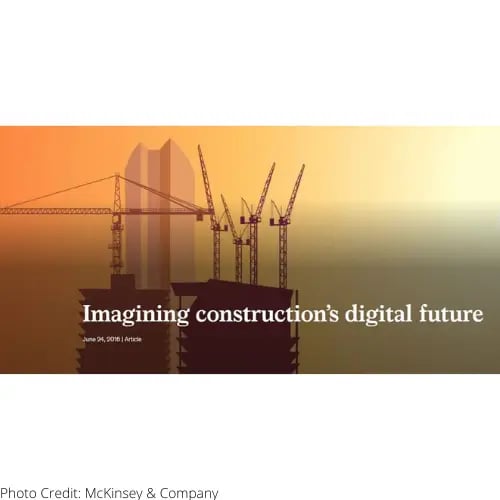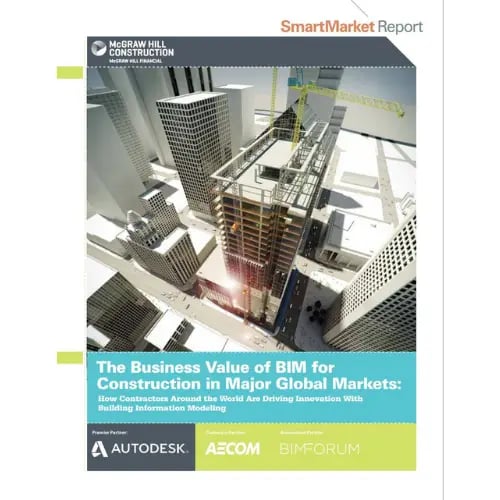BIM Market Reports
Imagining construction’s digital future
By Rajat Agarwal, Shankar Chandrasekaran, and Mukund Sridhar
- The construction industry is ripe for disruption. Large projects across asset classes typically take 20 percent longer to finish than scheduled and are up to 80 percent over budget. Construction productivity has actually declined in some markets since the 1990s; financial returns for contractors are often relatively low—and volatile.
- One study found that 75 percent of those that adopted BIM reported a positive return on their investment. They also reported shorter project life cycles and savings on paperwork and material costs. Given these benefits, a number of governments, including those in Britain, Finland, and Singapore, mandate the use of BIM for public infrastructure projects.
- The use of 5-D BIM technology will be further enhanced through augmented-reality technology via wearable devices. For example, a wearable, self-contained device with a see-through, holographic display and advanced sensors can map the physical environment. Companies are developing BIM-like design and construction solutions for these platforms. In this “mixed reality” environment, users can pin holograms to physical objects and interact with data using gesture, gaze, and voice commands.
- Combining 5-D BIM and augmented-reality devices will transform construction, maintenance, and operations. To get the full benefit of BIM technology, project owners and contractors need to incorporate its use right from the design stage, and all stakeholders need to adopt standardized design and data-reporting formats compatible with BIM. In addition, owners and contractors need to dedicate resources for BIM implementation and invest in capability building.
The Business Value for BIM for Construction in Major Global Markets
By Stephen A. Jones and Harvey M. Bernstein, McGraw Hill Construction
- Three-quarters of the construction companies report a positive Return on Investment (ROI) on their BIM Program investment and have clear ideas about how to further improve ROI.
- While there is no standard metric for measuring ROI on BIM (unlike more standard measurements on project ROI), the largest percentage of firms estimate the ROI on their BIM investments to be between 10% and 25%.
- Half of the contractors at the highest level of BIM engagement are reporting very positive ROI - in excess of 25% on their investment in BIM - compared with 11% of the firms at the lowest level, over a third of whom are still at negative or break-even ROI.
- BIM is significantly reducing costly rework on projects for 40% of the highest BIM engagement contractors, versus only 28% of those at the low engagement level.
- Fewer errors and omissions, less rework, and lower construction costs are among the top five BIM benefits cited by contractors.
- Over the next two years, contractors expect the percentage of their work that involves BIM will increase by 50% on average.
- BIM ROI increases directly with a contractor's level of BIM engagement, represented by its BIM experience, skill level, and commitment to doing a high percentage of its work in BIM.
- Contractors in all markets are planning significant investments to expand their BIM programs over the next two years, including an increasing focus on internal and external collaborative procedures as well as mobile hardware and BIM software.





